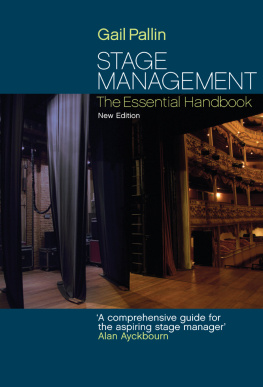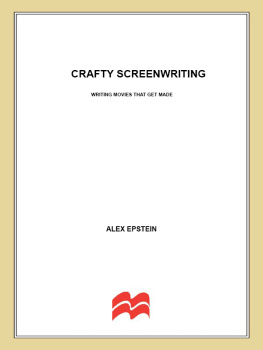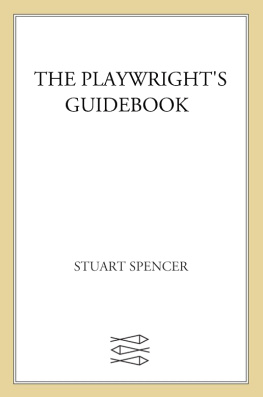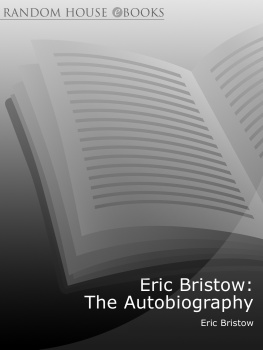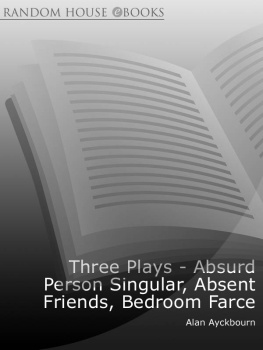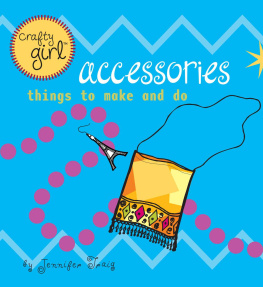Contents
Guide
The author and publisher have provided this e-book to you for your personal use only. You may not make this e-book publicly available in any way. Copyright infringement is against the law. If you believe the copy of this e-book you are reading infringes on the authors copyright, please notify the publisher at: us.macmillanusa.com/piracy.
Contents
To the countless theatre people I have worked alongside, for most of whom much of this will come as nothing new: writers, directors, producers, designers, administrators, stage managers, technicians, casting directors and, of course, the actors who ultimately bring it all alive.
Ive been asked on a number of occasions if Id care to write something about playwriting, or rather, more accurately, how I go about playwriting. Slightly less frequently, Ive also been asked to write something about directing. Ive always declined to do either of these, for two reasons.
First, my approach to both jobs has been extremely pragmatic. Im rarely one to theorise and when I try, I tend to get myself in the most awful tangle and have doubtless confused many more would-be authors or aspiring directors than Ive ever managed to help. I see both activities as purely practical ones that can never in the strict sense be taught. They both rely ultimately on a spontaneity and instinct that defies theory.
Secondly, as my career has progressed over the forty odd years Ive been practising it, the two activities, writing and directing, have now merged so completely that these days I find it almost impossible to define where one leaves off and the other starts. In other words writing, for me, is in a sense only the preparatory notes for the directing process; directing is the continuation and completion of the writing.
The following is an attempt to describe, as far as I can, this double process. Some of it is quite probably unique to me and contains procedures and practices that it would be highly unwise for others to try and copy. The rest is really just plain common sense. But if Ive learnt anything it is that it never hurts to point out the obvious occasionally, certainly in the theatre to actors, directors or writers and sometimes even to designers, stage managers and technicians. Often we quite wrongly suspect simplicity. We go digging around in the creative sand trying to make our art more meaningful, somehow deeper. Generally all we do is end up with our heads entirely buried, presenting the audience with our rear ends.
Finally, a mild apology. Most of the examples and illustrations that follow are drawn from my own plays. This, I promise, is not a cunning ploy to induce future students to purchase copies of my plays. Its more an admission that when it came to it, my own plays were the readiest to hand and the easiest to recall. But Im afraid Ive never been much of a one for research. Most basic facts have always eluded me at vital moments and I often find the long trek from the keyboard to my reference shelf far too taxing.
Frequently, I fall back on sheer invention, believing that apart from the one essential truth namely truth of character theatrical truth need never necessarily bear any relation to real-life truth whatsoever; on the contrary, literal facts often get in the way of a really good story. After all, such things seldom bothered Shakespeare. A lot of it is about whether it seems credible. Theatres a lot about the seemingly. You need to believe it at the time.
So by all means believe some of this book, but never all of it.
I wrote my first play in 1959 whilst working as a stage manager, electrician, lighting designer and sound engineer and aspiring to be an actor. I had joined Stephen Joseph, who was running a series of summer seasons of plays in a highly unlikely venue on the first floor of the public library in Scarborough, in the North Riding of Yorkshire. Probably in order to deflect what he quite rightly diagnosed as an abortive ambition to be a performer, he encouraged me first to write and, a little while later, to direct.
At first these two activities were quite unconnected. Some weeks I wrote and/or acted, some weeks I directed. My own plays were directed by others: the first by Stephen himself and the next two by Clifford Williams.
My directing I confined initially to other peoples texts, starting with Patrick Hamiltons classic melodrama Gaslight. But by the 1960s, with a revival of my fourth play, Standing Room Only (and coinciding with my exit as an actor from the cast lists) I began to direct productions of my own texts; though it wasnt until 1975 (in co-direction with Peter Hall) that I first directed in London, with Bedroom Farce at the National Theatre, followed in 1977 by the West End production of Ten Times Table.
* * *
Along with serving as the artistic director of the Stephen Joseph Theatre, Scarborough, Ive been juggling the two careers ever since, though a year or so back I made a decision to slow down slightly and to concentrate my energies rather more on writing and directing my own new plays. The older I get and the longer my career as a writer stretches, the more I come to appreciate the fact that there are still new plays coming.
So where does this process all start? How does a play find its way from an often slight notion to a full-blown stage production involving scores of people pursuing dozens of different disciplines? For make no mistake, the snowball effect involved in the creation of a stage play is a drama in itself.
I remember years ago climbing up to the fly gallery of the Globe (now the Gielgud) Theatre in Shaftesbury Avenue. It was the final night of Ten Times Table. The set was due to be struck and a new set brought in and fitted up. This new set was also for a play of mine, Joking Apart. For about three days (and some nights) I watched as dozens of stagehands, painters, electricians, stage managers and prop makers swarmed across the stage, first dismantling one set and then assembling the other. The director in me watched with fascination whilst somewhere inside, the writer was silently screaming: My God, what have I started?
This really isnt a choice I consciously make. I certainly dont decide when I sit down to write: today Im going to write a comedy. Simply, Im going to write a play. The degree of lightness or darkness is often initially dictated by the theme, but never to the extent that I would ever want the one totally to exclude the other.
Theres an old acting maxim, When playing a miser, stress his generosity. The same is true of writing a play, or indeed of directing one. The darker the subject, the more light you must try to shed on the matter. And vice versa.
A few years back, when I was again directing at the Royal National Theatre, we did a hugely successful revival of Arthur Millers tragedy, A View from the Bridge. I think Ive rarely laughed as much in a rehearsal room as I did during the early rehearsals, as we searched both for the light, the genuinely legitimate moments of laughter we found lots and for speed. Our version apparently ran about thirty minutes shorter than a recent New York production had done.
Conversely, when we came a few months later to my own comedy, A Small Family Business, the search was on for the darkness that lurked behind the cheery family exterior. (Its actually a comedy about greed, blackmail, adultery, prostitution, organised crime, sexual deviation, murder and teenage death through drug addiction though we never billed it as that!)
No play worth its salt says nothing at all. It would actually be very difficult to achieve this (though Ive read some in my time that do come very close). We often dismiss our light comedies and farces as trivia with nothing to say. With the successful ones, this is generally untrue.
I have a theory that to be genuinely respectable as a so-called comic writer, on a par with an equivalent serious writer, you need to have been dead preferably for a century. By which time, of course, most of the comedy is incomprehensible and can only be laughed at by scholars. Never mind, rejoice in the fact that should you be fortunate enough to write comedy, youll do very nicely during your own lifetime if youre lucky, and to hell with posterity. Though ironically, if you write a comedy truthfully and honestly, it is possible that the play might still survive because of its truth of observation, long after most of the surface jokes are dead.


